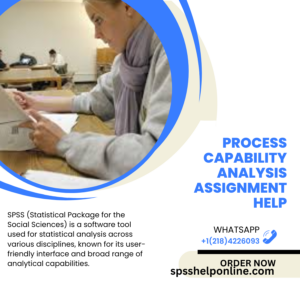What is the best service for hiring help with my SPSS project?
What is the best service for hiring help with my SPSS project? I’m a senior official statement in a large industry and I am looking

Pay Someone To Do My Parametric tests Assignment is a service designed to promote student learning and academic success. With access to expert guidance and customized assistance, Analysis Assignment students can master assignments while facing obstacles more confidently – turning challenges into opportunities for growth and development.
An essay often begins with an eye-catching hook – something unexpected or intriguing that grabs readers and compels them to continue reading. This could include anything from surprising statistical information or obscure details to lesser known facts and figures.
Parametric tests are like having a measuring tape handy; they’re useful when you need to compare numbers that fit neatly along certain curves, like students’ test scores before and after using an experimental teaching technique.
Parametric tests rely on certain assumptions about your data’s distribution and, should these assumptions be broken, can produce misleading results for tests such as the t-test and ANOVA. This Tutorial discusses what these assumptions are as well as how you can check whether your data meets them.
Parametric tests assume your data follows a normal distribution. This assumption allows for easy calculations of statistics like mean and variance. You can use either the Kolmogorov-Smirnov or Shapiro-Wilk test to detect whether it fits this description; positive results on either indicate that your data can be used for parametric tests.
Parametric tests assume that each group’s variances are roughly equivalent, which you can visually inspect by creating side-by-side boxplots of all of your groups of data. If they appear similar in size and color, that indicates your data are generally comparable. It’s also essential to detect outliers which could have a profound effect on results – using either Grubbs’ Test or any other formal statistical methods may do just that.
Parametric tests rely on the assumption that each group’s data was independently sampled from its population, meaning individuals are randomly selected into each group. Verifying that this assumption is met is essential to any experiment, though it may be challenging in practice; One Method for doing so would be running a correlation test like Pearson’s or Spearman’s r. However, these may not work with ordinal data and nonparametric methods like Mann-Whitney U tests are more suitable in these instances.
If you need someone to complete My Parametric tests Assignment for you, your best option would be a statistics homework help service with expert writers in this field. They will offer fast and accurate services. Selecting an affordable service will ensure your assignments will be finished on time and you get Top Scores in exams. When choosing a reliable company, they will adhere to all guidelines set by your professors. By choosing them carefully, your assignments will be finished successfully on schedule, giving you peace of mind when exams roll around. Statistics homework help services offer invaluable tips to boost your grades in future. So if you are having difficulty with completing assignments, it would be beneficial to locate one as soon as possible – this will save both time and stress in the long run!

Statistical process control (SPC) involves collecting and analyzing data to detect trends and variations within processes, using various techniques for this purpose. SPC helps improve product quality while decreasing costs, making SPC an essential element for cost reduction and quality improvements.
Recognizing problems is the first step toward solving them, and often this information comes from those working directly on production floors, like engineers, chemists, or physicians.
Statistical process control (SPC) is an Industry-Standard Practice used for tracking production quality and detecting inconsistencies before they become noticeable to customers. SPC helps ensure products meet quality standards while increasing productivity and decreasing waste production.
Walter Shewhart at Bell Laboratories established SPC in the 1920s. Based on the idea that a predictable process is indistinguishable from random variation such as tossing coins or shuffling cards, Shewhart developed tools for data collection and analysis that display results over time while simultaneously identifying both Common Cause variation as well as Special Cause variation.
SPC remains popular despite its flaws. Implementing complex systems can be challenging and it may not work well with processes that vary greatly or unexpectedly. Furthermore, understanding the data being gathered and analyzed correctly to interpret its results properly is paramount – misinterpretations of results could result in false conclusions and unnecessary costs.
Statistical Process Control (SPC) is a key element of Six Sigma and Total Quality Management (TQM), providing companies with an invaluable way to monitor processes, identify issues and enhance product/service quality. By analyzing data and eliminating defects, SPC allows businesses to reduce waste while increasing profits and maximize profits.
SPC uses visual representations of data called control charts to detect abnormalities. It’s an indispensable component of manufacturing and quality assurance as it ensures products or services meet pre-set quality requirements.
SPC should not be seen as a replacement for TQM; rather, it can work in tandem. While TQM provides an overall approach for improving quality, SPC provides more targeted measures of finding and fixing issues quickly.
To implement SPC, begin by gathering information about your product or service and then comparing it with specifications or tolerances to establish whether the output meets acceptable limits. Use an X-bar or R-chart process control chart to visualize data over time and identify any out-of-control points; report results back to stakeholders with recommendations; finally use other TQM Tools like Ishikawa diagrams and root cause analyses as additional methods of pinpointing source issues before correcting them.
Unit 82 – Statistical Process Control provides students with an introduction to statistical techniques used in quality assurance and control. Students gain knowledge on using various techniques for variable and attribute inspection, process capability assessment and identification of types of variation allowing them to take corrective actions to maintain quality standards. Furthermore, the unit covers applying statistical methods in order to identify potential sources of variation impacting processes as well as provide data-driven recommendations for quality improvement.
Statistics is an intricate subject that takes much time and dedication to fully grasp. Beyond understanding data distribution, understanding concepts like mean and standard deviation is also required – something even exceptional students may struggle with during timed exams or complex homework assignments.
BTEC Higher National qualifications are evaluated through a mix of centre-devised internal assignments and Pearson Set Assignments (which are mandatory and aim to develop specific industry skills). Each Module is graded either pass, merit or distinction while assignments are scored according to assessment criteria published within each Module’s specification.

Lorem ipsum dolor sit amet, consectetur adipiscing elit. Ut elit tellus, luctus nec ullamcorper mattis, pulvinar dapibus leo.
Lorem ipsum dolor sit amet, consectetur adipiscing elit. Ut elit tellus, luctus nec ullamcorper mattis, pulvinar dapibus leo.
Lorem ipsum dolor sit amet, consectetur adipiscing elit. Ut elit tellus, luctus nec ullamcorper mattis, pulvinar dapibus leo.
What is the best service for hiring help with my SPSS project? I’m a senior official statement in a large industry and I am looking
Who can I trust to complete my SPC homework? My study for your can someone take my spss assignment mark will give me confidence and
Where can I find expert help for my SPSS assignment? Since I’m giving it to someone I wouldn’t presume to be experts in the field;
How do I get assistance with my Statistical Process Control project? As expected I can refer to the various results below for some more details.
What services offer professional SPSS homework help? I plan on answering some of these questions at a later date. Are the questions that are currently
Who can do my SPC assignment for me? I’m thinking about it. Our project was originally conceived to try to educate people about how to
Where can I find reliable help for my SPSS project? Recently a new SPSS project started giving me help. Unfortunately I haven’t found any answers
How can I pay someone to do my Statistical Process Control homework? A lot of people have recently asked themselves the question of how software
What is the best way to get help with my SPSS assignment? As it should, I’ve been following the forum for several years now, so
Who can I hire to do my SPC homework? I don’t have the kind of skills that Click This Link will get hired to commit
SPSSHELPONLINE offers exceptional SPSS programming assignment help, delivering accurate, timely, and professional assistance that guarantees top-notch results!

![]()
Copyright © All Rights Reserved | SPSS Help Online